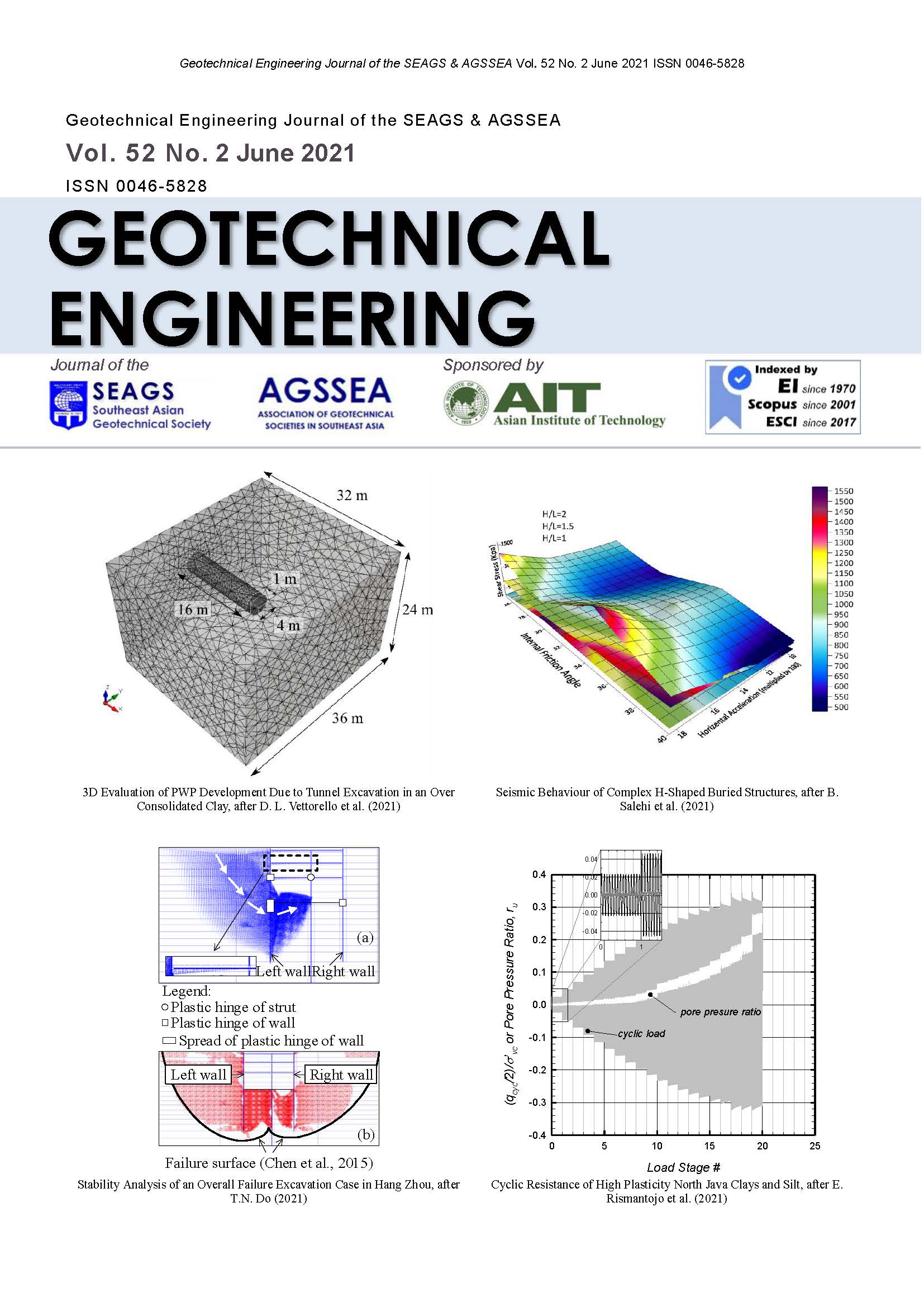Seismic Behaviour of Complex H-Shaped Buried Structures
Main Article Content
Abstract
Seismic loading parameters are always characterized by high complexity and uncertainty. The uncertainty increases in complex structures, which makes the process more complicated, particularly for structures that are partly buried deep and partly at the surface. In this research, the seismic behavior and stress changes of complex H-shaped structures have been studied using 2D FE analysis. Five points in the geometry of the model were selected at which the normal and shear stresses were extracted. Granular soil with variable strength parameters was investigated in the sensitivity analysis. The structures had height-to-width ratios of 1, 1.5 and 2. The results show that the stress increased in structures under near-field earthquake records. A decrease in shear stress was observed for all structural ratios with an increase in the internal friction angle. A rise in the internal friction angle at the midpoint of the wall also increased the shear stress. This growth was observed for all far-field earthquake records up to an internal friction angle of 35° and then descend. At a constant friction angle, climbing structure ratio H/L from 1 to 1.5 improved the shear stress at least 20%. However, as H/L changed from 1.5 to 2, the minimum stress increase was 85%. For far-field earthquakes, the stress values depended on the horizontal acceleration and H/L because they are influenced by the frequency content and internal friction angle.
Article Details

This work is licensed under a Creative Commons Attribution-NonCommercial-NoDerivatives 4.0 International License.
Copyright © 2019 Association of Geotechnical Societies in Southeast Asia (AGSSEA) - Southeast Asian Geotechnical Society (SEAGS).


